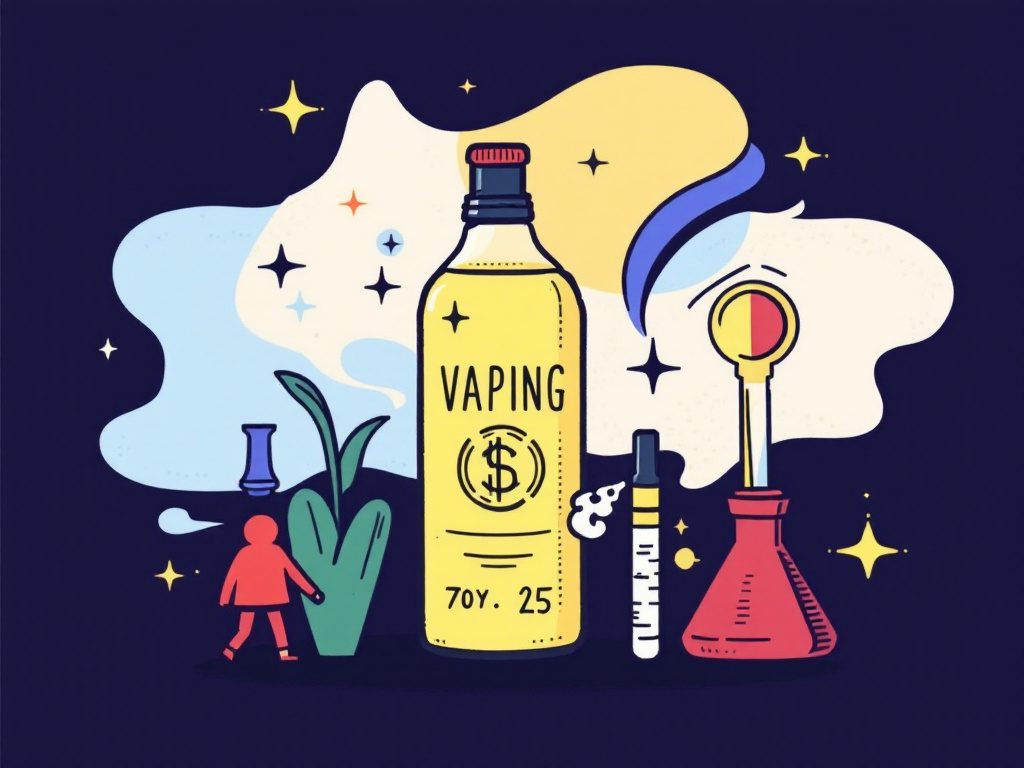The Surge in Youth Vaping: A Crisis Demanding Solutions
Walk through any high school corridor or college quad, and the evidence is impossible to miss: vaping, once marketed as a safer alternative to traditional smoking, has entangled a new generation in nicotine’s grasp. In U.S. classrooms and international communities alike, e-cigarettes have reshaped the landscape of youth addiction, pushing pediatricians, parents, and policymakers to search desperately for effective interventions. Until recently, those seeking to help young vapers quit faced a worrisome reality—very few evidence-backed options existed.
While sweeping campaigns and school bans have made headlines, most youth addicted to e-cigarettes report significant cravings that disrupt daily routines, coursework, and even relationships. As one 19-year-old participant in the Mass General Brigham study put it, “I didn’t consider myself addicted until I tried to stop—and couldn’t focus on anything else.” This disconnect between perceived and actual dependence isn’t just anecdotal. A closer look reveals what public health experts have long feared: vaping’s appeal often masks the powerful grip of nicotine dependence among teens and young adults.
Data from the CDC indicate that nearly 14% of high schoolers used e-cigarettes in 2022, reinforcing the urgent call for effective cessation strategies. But until now, young people’s attempts to quit mostly relied on loosely structured behavioral counseling or digital support—tools with disappointing long-term success rates, as many pediatricians will attest. The landscape may be poised for change thanks to an unlikely hero: a medication originally designed for adult smokers.
Varenicline: An Adult Pill Finds New Life in Youth Nicotine Recovery
Researchers at Massachusetts General Hospital and Mass General Brigham recently published groundbreaking evidence in JAMA: the FDA-approved drug varenicline—commercially known as Chantix—can more than triple a young user’s odds of quitting vaping at 12 weeks, compared to behavioral support alone. But what exactly makes varenicline so effective?
Mechanistically, varenicline acts as a partial agonist at the α4β2 nicotinic acetylcholine receptor in the brain—essentially disrupting the “reward feedback loop” created by nicotine and reducing cravings and withdrawal symptoms. For a group whose dependence often flies under the radar, this is a game-changer. Teens and young adults not only struggle with the social pull of vaping but also face the neurochemical realities of nicotine addiction, making willpower-based approaches excruciatingly difficult.
The clinical trial divided participants—ages 16 to 25—into three treatment arms: varenicline plus behavioral counseling and digital text support, placebo pills with counseling and text support, or text support alone. The results were striking: at the 12-week mark, 51% in the varenicline group were vape-free, compared to just 14% of those on placebo and 6% on text support alone. Six months out, the varenicline benefit largely held, signaling lasting change rather than a fleeting victory. According to Dr. Nancy Rigotti, the trial’s lead author, “This is a significant step forward; until now, we had virtually no tools proven effective for young people hoping to break free from vaping.”
“For teens hooked on e-cigarettes, the difference between white-knuckling it alone and receiving targeted medical therapy can mean the difference between relapse and real recovery.”
Such findings echo studies in adult populations but are especially salient in light of how early nicotine exposure can prime the brain for future addictions—a concern that continues to draw warnings from groups like the American Academy of Pediatrics and the surgeon general. The research also highlights the importance of multimodal therapy, where medication is paired with structured behavioral support for greater impact. As pediatrician Dr. Susanna Winston observes, “We no longer need to accept that relapsing is inevitable for our younger patients.”
New Horizons: Changing How We Treat And Talk About Youth Vaping
What does this mean for you, your students, or your patients? First, the dispelling of a persistent myth: that counseling, digital modules, and a vague promise to “try harder” are enough to disrupt severe nicotine addiction. Varenicline’s impact wasn’t just a fluke of selective recruiting. Even among participants who didn’t initially see themselves as addicted, many reported withdrawal symptoms that matched or exceeded those seen in adult smokers—underscoring why a medically robust response is needed.
According to a 2023 Pew Research study, most Americans now support stronger regulation—and, crucially, more robust cessation resources—for youth vaping. Yet public investment in youth cessation tools, as opposed to punitive measures, remains insufficient. Policymakers and healthcare systems have both an opportunity and responsibility to invest in what works. Evidence-based approaches—medication, behavioral counseling, and supportive technology—must be standard, not rare exceptions.
Internationally, anti-vaping campaigns are beginning to shift from fear-based ads to more nuanced, supportive programs, like South Korea’s “Don’t Fall for Vapes” initiative. But government action alone can’t substitute for clinical innovation and access. Experts, such as Harvard’s Dr. Michael Siegel, caution that “Limiting ourselves to scare tactics and school-based bans, without accessible treatment, leaves youth vulnerable and families feeling powerless.”
To move forward, progressives should push for insurance coverage of proven cessation aides for youth, mandate proactive vaping screening in schools and pediatric offices, and address the root causes—stress, advertising, and social inequities—that make vaping so pervasive in the first place. No one should be left navigating a chemical dependency without support, especially when the science now points to effective, compassionate interventions.

